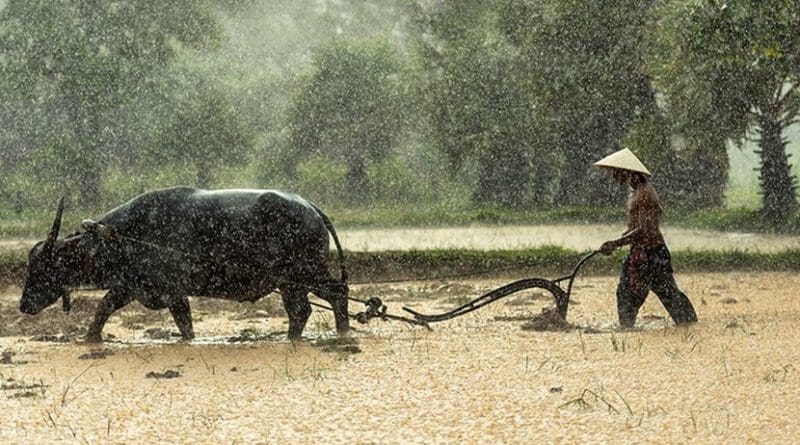Feeding The World Will Require Urgent And Concerted Action – OpEd
After a period of steady decline, hunger is on the rise again in Africa according to a recent UN report. The report suggests that years of gains have been erased and throws into serious question whether the continent will be able to meet the Malabo Goals—particularly the target to double agricultural productivity by 2025—as well as the Sustainable Development Goals, particularly SDG2.
The report indicates that the agricultural sector will play an essential role in providing stable employment and food security to millions of Africans – something that will become ever more important as climate change poses a further threat to the continent’s nutrition. While the challenges facing Africa—and the rest of the world—are sizable, recent advances in agricultural technology and precision farming techniques could hold the key to solving this most critical of conundrums.
Worrying forecasts for Africa’s food security
The UN report revealed that 257 million Africans suffer from chronic undernutrition, up 13% from the 222.5 million afflicted in 2015. That equates to roughly one fifth of the continent’s entire population—and this number is likely to rise further in the coming years and decades. According to the UN’s Food and Agriculture Organization (FAO), by 2080 Africa will house up to 50% of the world’s undernourished people.
Naturally, the agricultural sector will play an instrumental role in meeting the challenges ahead. Unfortunately, projections in this sphere are also troubling; FAO predicts that climate change will see average temperatures across Africa rise by between 1.5°C and 4°C this century, which could lead to as much as 20% less arable land, up to 50% lower yields and 90% decreases in crop revenue. Slight growth in agricultural GDP and intra-continental trade over recent decades has done little to assuage those worries.
A microcosm for global problems
Of course, the dilemma of how to feed a growing population in a warming world is not just a problem affecting Africa – or even one only affecting developing nations. Thanks to our rising population and incomes, the world will need to produce 70% more food by 2050, most of it on existing agricultural land. With agriculture already using 11% of the Earth’s total land area and 70% of the water extracted for human endeavors, it promises to be a tall order to satisfy mid-century global appetites.
One area in which there is significant room for improvement is food waste. According to a 2016 study, between 25% and 30% of the world’s food is wasted. Cumulatively, these unnecessary losses cost the worldwide economy a whopping $940 billion and result in a carbon footprint of over 8% of total greenhouse gas emissions. Addressing that profligacy and tightening both belts and profit margins will go some way to ensuring there is enough food for all and combating climate change at the same time.
Precision agriculture offers hope
In addition to cutting down on post-harvest food waste, however, crop yields will have to be increased. Fortunately, the burgeoning precision agriculture industry may hold some answers to these difficult questions. In 2017, global investment into agricultural technology (or agtech) reached $1.5 billion, while the industry’s net worth is expected to grow to $2.42 billion by next year. Both major corporations and small start-ups have gotten involved in the sector, and there are already a multitude of pilot projects in operation all over the world, involving promising technologies which could help boost crop yields, increase efficiency and reduce the use of pesticides, herbicides and fertilizers.
One such scheme, from UK-based company Earth Rover, features an autonomous robot that is capable of detecting and destroying up to 800 different weeds via laser technology. Other companies, like Swiss firm EcoRobotix, have also developed solar-powered weeding robots which they claim spray 20 times less herbicide than conventional weeding methods. Such projects could significantly cut down on the use of herbicides and other chemicals commonly used in agriculture, which have been the target of increasing criticism in recent years.
These innovations could also offer a more practical alternative to the immediate ban on herbicides and pesticides which many campaigners against these chemicals are seeking – a scenario which is still a long way from being realistic, but where agtech can make a crucial difference.
Sensible sustainability
Indeed, the latest innovations can complement existing agricultural methods to gradually reduce dependence on such chemicals whilst still increasing crop outputs. Sensors and unmanned drones can provide remote monitoring and real-time updates on the condition of crops across a multi-acre farm, allowing farmers to direct efforts to where they are most needed and optimize fertilizer or pesticide application.
This insight may be further enhanced by technologies such as incredibly accurate weather forecasting and even facial recognition software for cows. Collectively, these tweaks’ impact could be monumental on the economy, the environment and food security, and could help mitigate the effects of climate change. Even better, these exciting developments in the world of agtech don’t unfairly benefit larger farms: the beauty of precision agriculture is that it’s equally effective at optimizing operations on a micro-scale as it is on a macro-one, particularly important given that small farmers grow 70% of the world’s food.
The news that hunger is once again on the rise in Africa is deeply alarming, particularly given the challenges already posed by climate change and an expanding population. On the other hand, the variety of innovative new problem-solving technologies suggests that feeding the world throughout the 21st century is possible. Tackling food poverty is almost within our grasp; all that is required now is collective political will and investment capital to reach out and grab it.
*Ilsa Janssen is a policy analyst in London

